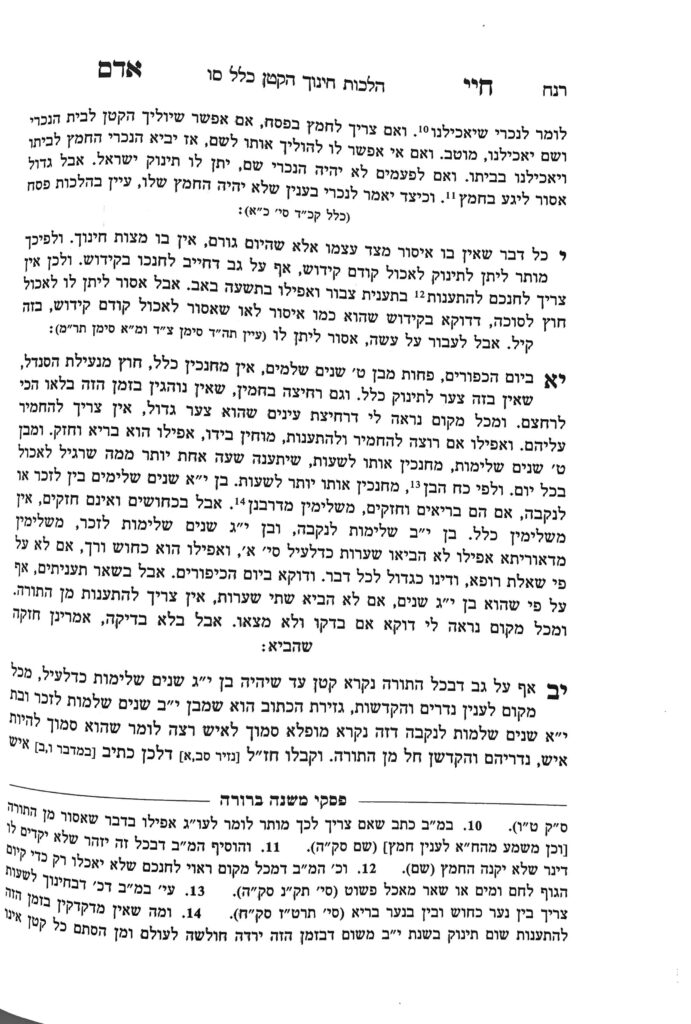We are continuing in siman 11, regarding a katan observing the issurim of Yom Kippur. The Chayei Adam writes that from age 11, if a katan is strong and healthy, they should complete the fast miderabanan. However, if they are not healthy, they should not fast. There is no concept of chinuch if they are not healthy, because we are concerned for their health.
Once a girl has reached the age of 12 complete years, and a boy has reached the age of 13 complete years, they are chayav to fast mideoraysa. The only exception is if a doctor instructs that the child should not fast.
Although we have learned that, besides the age component, a child must reach a level of physical maturity; nonetheless, once the child has reached age 12 or 13 they must fast. The halachic assumption is that the age of bar or bas mitzvah brings with it physical maturity. If they truly have not reached physical maturity, their chiyuv to fast on Yom Kippur is miderabanan.
The Chayei Adam clarifies that these ages regard Yom Kippur. Regarding other fasts, even if the child has reached bar or bas mitzvah, if they know with certainty that they have not reached physical maturity, they do not need to fast. One would have to perform a physical examination to confirm not having reached physical maturity; otherwise we assume that they have reached physical maturity upon reaching the age of halachic maturity.
We rely on this assumption for a dinim derabanan. For example, a bar mitzvah boy may be motzi the tzibbur by davening for the amud solely based on assumption and without a physical examination. We would not rely on an assumption for a din deoraysa, such as eid echad ne’eman b’issurim (a single witness’s testimony can be accepted regarding matters of issur). We will clarify this concept further in the next shiur, be’ezras Hashem
Summary
- Until the age of nine, a katan is discouraged from observing the issurim of Yom Kippur, except for leather shoes, anointing, and washing. However, they may wash their eyes
- From age nine to 11, we perform chinuch l’shaos.
- From age 11, if the child is healthy, they should complete the fast. If they are not healthy, they should not try to complete the fast, but continue with chinuch l’shaos.
- From the age of bar or bas mitzvah, a child must fast mideoraysa. If they have not yet reached physical maturity, they must nonetheless fast miderabanan.
- However, regarding other fasts, if they have not reached physical maturity, they do not need to fast.
There is a halachic assumption that when a child reaches the age of bar/bas mitzvah, they have reached physical maturity as well. We rely on this dinim miderabanon.



